The Other Anzacs (49 page)

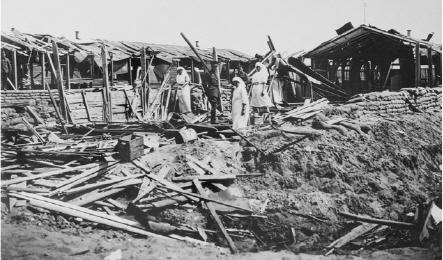
Just how close nurses often were to bombing raids is underlined by the devastation shown here of a Red Cross hospital at Etaples, which was destroyed by German bombs. The raid killed several patients and nurses. (Photo courtesy of the Australian War Memorial H09726)
LEFT : Pearl Corkhill was awarded the Military Medal for her bravery during a German bombing raid on a British casualty clearing station at Longvillers in the Somme on 19 July 1918. (Photo courtesy of the Australian War Memorial, A04728) RIGHT : Sister Rachel Pratt, wearing the Military Medal awarded to her for bravery during a German air raid on No. 1 Australian Casualty Clearing Station at Bailleul on the night of 3–4 July 1917. Injured by an exploding bomb, she continued to nurse a patient. (Photo courtesy of the Australian War Memorial, P05664.001)
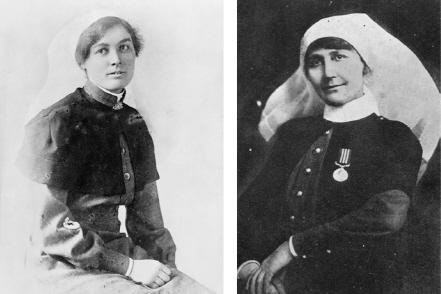
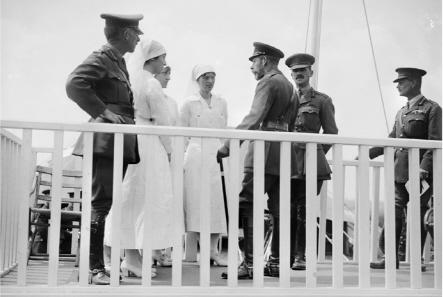
July 12 was a big day for Elsie Cook, Fraser Thompson, Frida Warner and Fanny Harris for it was the occasion when they were presented to King George V at a sports day at Henencourt. Elsie is probably the nurse on the left. (Photo courtesy of the Australian War Memorial EZ0153)
On 9 July 1917, Queen Mary visited the No. 1 Australian General Hospital at Rouen. She was accompanied through a guard of honour of Australian Army nurses by the hospital’s commanding officer, Colonel Trent Champion de Crespigny. (Photo courtesy of the Australian War Memorial K00019)
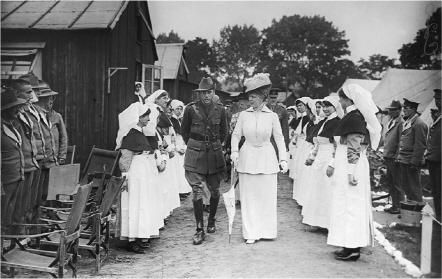

Sister Nell Pike of the Australian Army Nursing Service nursed at Abbassia in Egypt, on the island of Lemnos, in France and finally in England where she married Lieutenant Charles Laffin on 28 September 1917. (Photo courtesy of Patricia Williams and Daphne Tongue)
An intercessional service commemorating the fourth anniversary of World War I, Etaples, France, 4 August 1918. A large contingent of nurses attended the service, standing with the troops among the graves of the fallen. (Photo courtesy of the Royal New Zealand Returned and Services’ Association Collection, the Alexander Turnbull Library, Wellington, NZ, G-013757-1/2)
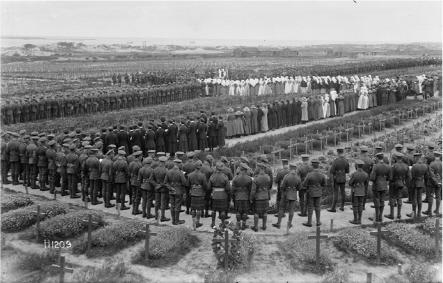

A wounded New Zealand soldier talks to a New Zealand nurse at a garden party in the grounds of the New Zealand Stationary Hospital probably at Hazebrouck, 24 June 1917. The bonds between the nurses and wounded soldiers in their care extended beyond the wards, the sisters buoying spirits of men physically and psychologically battered by the war. (Photo courtesy of the Royal New Zealand Returned and Services’ Association Collection, the Alexander Turnbull Library, Wellington, NZ, G-012800-1/2)
Former Prime Minister Joseph Cook visited the Australian Comforts Fund in London during 1918. Here, he is photographed at the entrance to the Fund’s headquarters with his son, Major Syd Cook (furthest right) and his daughter-in-law, Sister Elsie Cook (second left). (Photo courtesy of Hartley Cook)
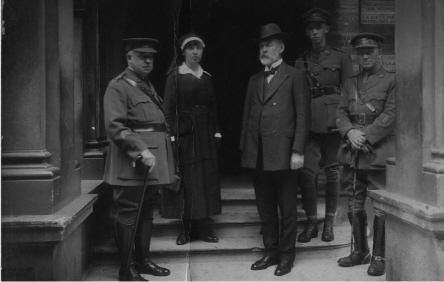

With the war won, sisters and patients prepared to celebrate Christmas 1918 in one of the wards at No. 3 Australian Army Auxiliary Hospital at Dartford, England. (Photo courtesy of the Australian War Memorial H03905)
Time for some fun. Australian Army nurses and wounded Australian Army soldiers take part in a snowball fight in the grounds of No 1 Australian Auxiliary Hospital, Harefield Park, England. (Photo courtesy of the Australian War Memorial H16672)

The clearing station became a centre of intense activity during the Battle of Cambrai, a town that by 1917 had become one of the Germans’ most important railheads and command sites. After the British 3rd Army had forced the Germans back some six kilometres to Cambrai and pierced the three trench systems of the Hindenburg Line for the first time in the war, the Germans counterattacked and drove back through the British gains on 30 November 1917. At 7 a.m., as she dressed, Anne thought that a fiercer barrage than normal was going on. Three hours later the matron ordered her to get her respirator and helmet. Outside the tent, she watched as a British observation balloon was shot down. The Germans were only five kilometres away, and Anne fancied ‘all at once that I can see the Germans swarming over the ridge’.
6
She hastened back to the boys on the stretchers to get them ready for evacuation, before throwing a few personal possessions— a purse, a few handkerchiefs, a comb and hairpins—into a suitcase. She saw the irony of it all, for the wounded and the gassed were making their way in streams towards the clearing station.
